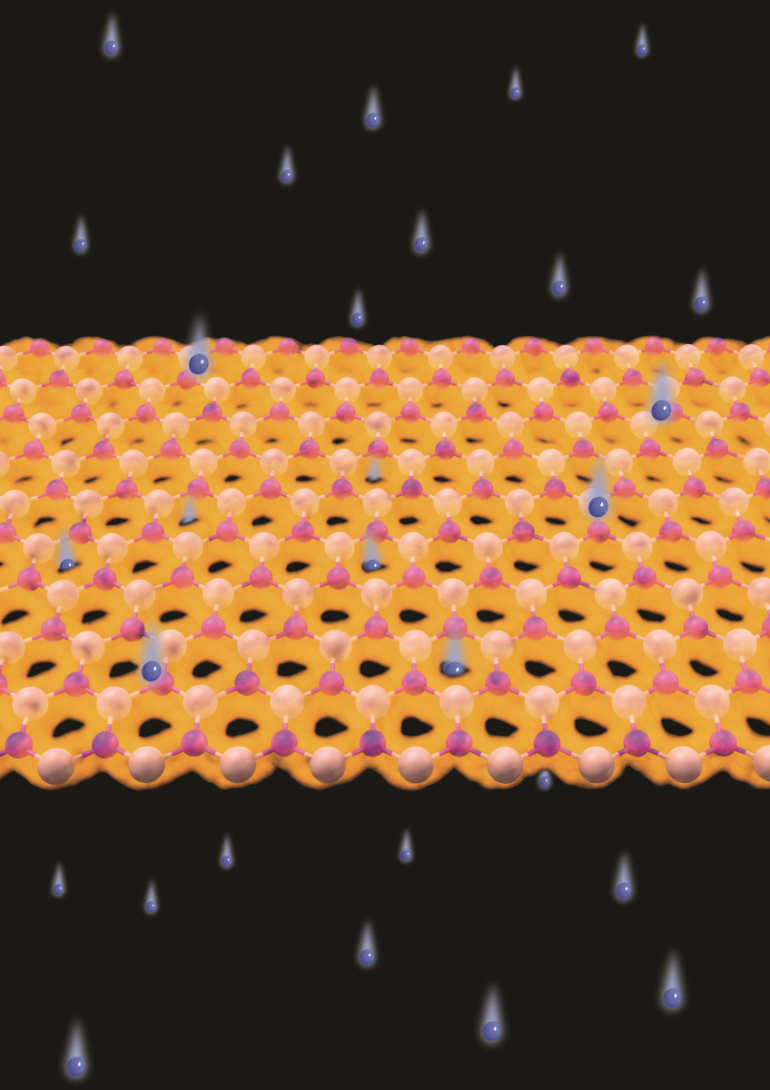Researchers from the National Graphene Institute at the University of Manchester have discovered a way to use light to accelerate proton transport through graphene, which could revolutionize the way we generate hydrogen.
Proton transport is a key step in many renewable energy technologies, such as hydrogen fuel cells and solar water splitting, and it was also previously shown to be permeable to protons by Manchester scientists.
Their new study published in Nature Communications has shown that light can be used to accelerate proton transport through graphene. Graphene is a single layer of carbon atoms that is an excellent conductor of both electricity and heat. However, it was previously thought that graphene was impermeable to protons.
The researchers found that when graphene is illuminated with light, the electrons in the graphene become excited. These excited electrons then interact with protons, accelerating their transport through the material.
This discovery could have a significant impact on the development of new renewable energy technologies. For example, it could lead to the development of more efficient hydrogen fuel cells and solar water-splitting devices.
“Understanding the connection between electronic and ion transport properties in electrode-electrolyte interfaces at the molecular scale could enable new strategies to accelerate processes central to many renewable energy technologies, including hydrogen generation and utilization,” said lead researcher Dr. Marcelo Lozada-Hidalgo.
Graphene, a single layer of carbon atoms is an excellent electronic conductor and, unexpectedly, was also found to be permeable to protons. However, its proton and electronic properties were believed to be completely unrelated. Now, the team measured both graphene’s proton transport and electronic properties under illumination and found that exciting electrons in graphene with light accelerates proton transport.
The smoking gun evidence of this connection was the observation of a phenomenon known as “Pauli blocking” in proton transport. This is an unusual electronic property of graphene, never observed in proton transport. In essence, it is possible to raise the energy of electrons in graphene to such an extent that graphene no longer absorbs light—hence the “blocking.”
The researchers demonstrate that the same blocking takes place in light-driven proton transport by raising the energy of electrons in graphene. This unexpected observation demonstrates that graphene’s electronic properties are important to its proton permeation properties.
Dr. Shiqi Huang co-first author of the work said, “We were surprised that the photo response of our proton conducting devices could be explained by the Pauli blocking mechanism, which so far had only been seen in electronic measurements. This provides insight into how protons, electrons and photons interact in atomically thin interfaces.”
“In our devices, graphene is being effectively bombarded with protons, which pierce its electronic cloud. We were surprised to see that photo-excited electrons could control this flow of protons,” said Dr. Eoin Griffin co-first author.
More information:
S. Huang et al, Gate-controlled suppression of light-driven proton transport through graphene electrodes, Nature Communications (2023). DOI: 10.1038/s41467-023-42617-4
Provided by
University of Manchester
Citation:
Graphene’s proton permeability: A switch for future energy technologies (2023, November 6)



